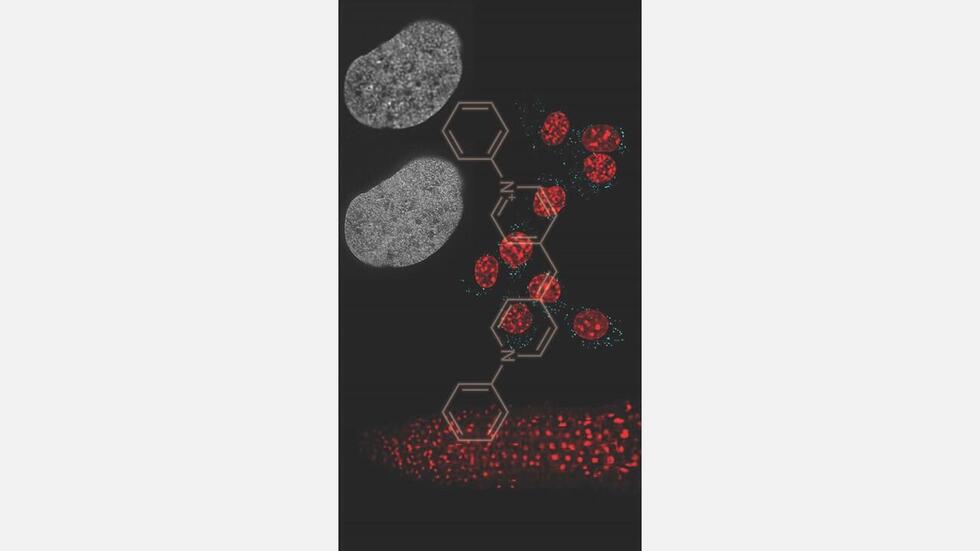
Biology
July 5, 2021
Nagoya University scientists reveal unprecedentedly versatile new DNA staining probe
A group of scientists at the Nagoya University Institute of Transformative Bio-Molecules (WPI-ITbM) have developed an incredibly versatile DNA fluorescent dye, named 'Kakshine' both for one of the group's members, Dr Kakishi Uno, and also for the fact that it causes to the cell nucleus (kaku in Japanese) to 'shine' during imaging. Dr Uno, with Dr Yoshikatsu Sato and Nagisa Sugimoto, the other two members of the research team at the Institute of Transformative Bio-Molecules (ITbM), succeeded in developing a DNA binding fluorescent dye with a pyrido cyanine backbone, which satisfies the three principal qualities required of such a dye -- that it have high selectivity for DNA, be able to use visible light with limited phototoxicity, and be applicable to a wide range of organisms - in a way that no previous dye has been able to.
Adding to the central set of functions required for such a chemical, Kakshine and its derivatives are highly compatible with cutting-edge microscope techniques. They represent the first dye of its kind to achieve super-resolution imaging of mitochondrial DNA in living cells with STED imaging, a kind of microscopy whose resolution exceeds the diffraction limit of light. Additionally, they enable deep tissue imaging by two-photon excitation imaging and discrimination of different organelle DNAs with a single dye by fluorescence lifetime imaging.
Kakshine is an exceptionally versatile new dyeing agent which improves upon the capabilities of and solves the shortcomings of current-generation fluorescent dyes in DNA imaging. Moreover, with applications in the medical and life science fields including electrophoresis, quantitative PCR and flow cytometry, Kakshine is expected to make a splash as the next-generation tool for DNA analysis.
Allowing discrimination between organelle DNA using low
phototoxicity visible light, Kakshine offers easy imaging even
with cutting edge microscopy techniques. (Credit: Yoshikatsu Sato)
The study, "N-aryl pyridocyanine derivatives are nuclear and organelle DNA markers for two-photon and super-resolution imaging," was published in the journal Nature Communications on May 11, 2021 at DOI:10.1038/s41467-021-23019-w.
Authors:
Kakishi Uno, Nagisa Sugimoto, and Yoshikatsu Sato at the Nagoya University Institute of Transformative Bio-Molecules (ITbM)
Find out more about ITbM